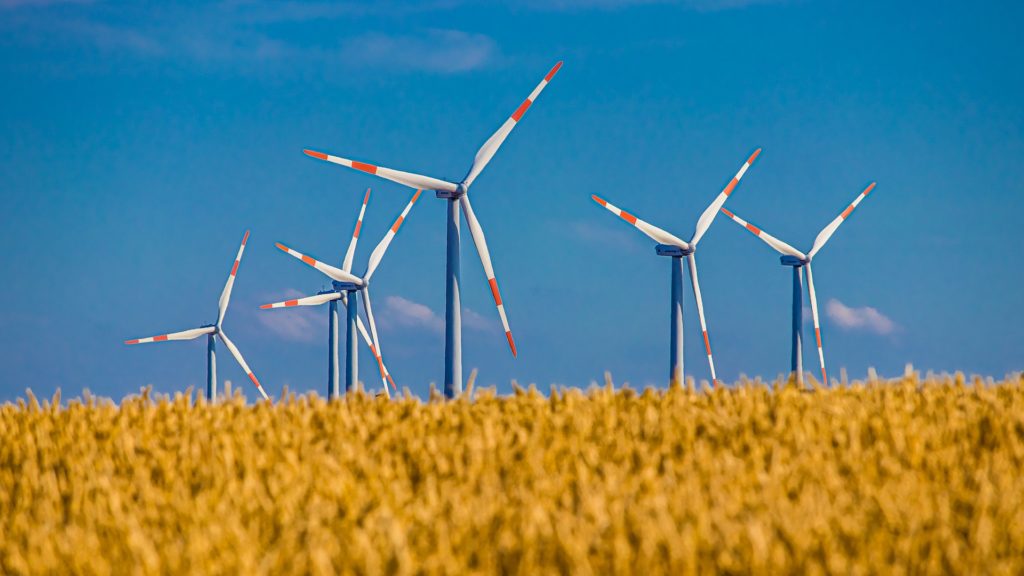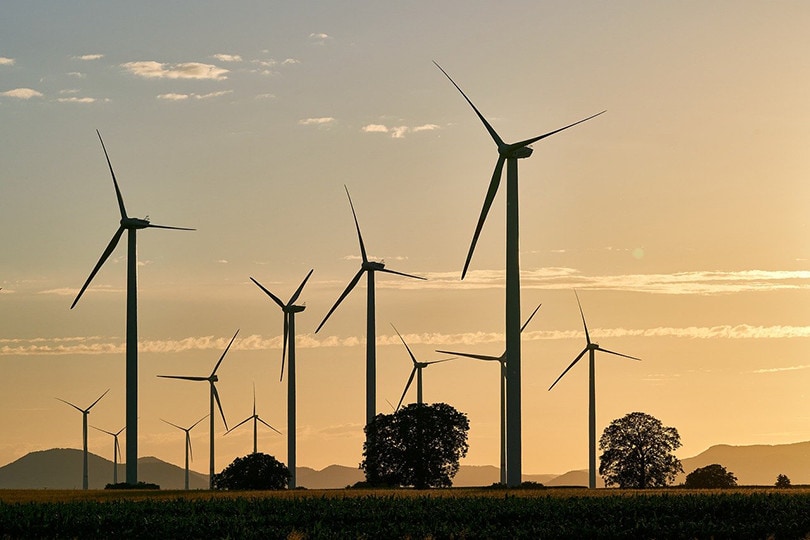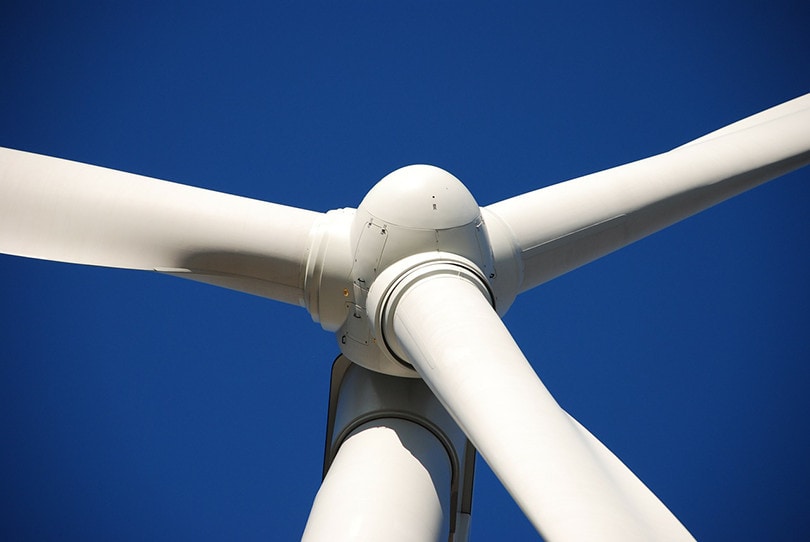6 Wind Turbine Myths and Misconceptions
-

- Last updated:

Note: This article’s statistics come from third-party sources and do not represent the opinions of this website.
Green energy continues to expand worldwide. As more businesses strive to move away from dirty sources of energy like coal, gas, and oil, they are turning towards cleaner alternatives like wind power. That means that wind turbines are popping up in larger numbers than ever before. But when people see these tall modern turbines being erected near them, it can cause anxiety. Wind turbines come with a lot of myths and misconceptions that shape people’s views of them. Are they safe? Are they noisy? These are common questions being asked in an era where wind power is growing faster than ever.
Here are the top six wind turbine myths and misconceptions and the truth behind each of them.

The 6 Wind Turbine Myths and Misconceptions
1. Wind Turbines Are Noisy
The Claim
Wind turbines create a lot of noise that disturbs nearby residents and animals. The constant movement and the size of the blades create a loud annoying sound.
The Facts
Wind turbines are not noisy. In fact, in most cases, a wind turbine is no louder than a moderately trafficked residential road in the suburbs. Any house on a road with speed limits of 45mph carries a similar noise load to a house that resides near a wind turbine.
The myth about noisy wind turbines stems from the earliest iterations of the technology. In the 1970s and early 1980s, there were wind turbines that created a lot of unpleasant noise. The old designs had the blades behind the turbine, which was louder than the current design where the blades are in front of the turbine. Today, if wind turbines are making unpleasant buzzing sounds or creating a lot of noise, they are likely suffering from a mechanical breakdown.

2. Wind Turbines Kill Birds
The Claim
Wind turbine’s large blades kill hundreds of birds that fly into them. They block migration paths and confuse birds leading to thousands of precious animals dying for the sake of human power generation.
The Facts
Wind turbines do kill birds. But all human activity kills birds, sadly. But turbines do not kill as many birds as people think. The myth of the bird murdering wind turbine comes from a single wind turbine in an area of California that featured narrow canyons. The wind turbines blocked one of the only flight paths in the area for migratory birds leading to the kind of massacre that has become a fact in many people’s minds.
The truth of the matter is that wind turbines only kill 1 in 10,000 birds. The other 9,999 are killed by daily human activity, including cars, buildings, and pet cats. The American house cat kills 3000x more birds than wind turbines. Large windows also attract thousands of birds every year, causing them to crash and die. Yet, very few people are advocating against new high rises and the banning of cats.
3. Wind Turbines Scare Livestock
The Claim
Farmers are hesitant to put wind turbines on their land because wind turbines scare livestock and distress nearby animals.
The Facts
Wind turbines are located on farms all around the globe, and the animals are not bothered by them. The spinning blades are so high in the air that most livestock doesn’t even notice them. Cows, goats, and sheep regularly graze around the base of wind turbines on wind farms all the time. In fact, being able to combine wind power generation and farming is one of the biggest draws of wind power. For that reason, wind turbines are heavily concentrated in rural states with lots of agricultural lands. Wind power and farming can be married very easily.

4. Wind Turbines Are Expensive
The Claim
Wind turbines are super expensive and will never be worth the initial investment. The costs do not make sense, and people should just use cheap gas-generated power instead.
The Facts
Wind turbines do have a sizable upfront cost but so does everything. No major infrastructure gets erected without an initial investment. Wind turbines cost roughly a million dollars to install, and they cost about $50,000 per year to maintain fully. Wind turbines do take time to recoup the initial investment due to the fact that each turbine only generates a few MW of power per year. Wind turbines have an expected lifespan of 30 years, so the back half of their operational life will profit.
The construction cost of all power plants has fallen in recent years, and wind power continues to get cheaper and cheaper. But for comparison, typical gas turbine plants cost $5 million or more to build. Nuclear power plants can cost as much as $10 billion.
5. Wind Turbines Are Unreliable Sources Of Energy
The Claim
Wind turbines need wind to work. No wind, no power. The reliance on something as random as the wind cannot be trusted for long-term power generation.
The Facts
Some people say wind power is unreliable, while scientists call it variable. Yes, wind power is variable in nature, but that does not mean it is unreliable. Climate data tracks weather patterns for years or even decades, and engineers can calculate an accurate wind load for a wind turbine given its exact location. Windy areas generally do not become un-windy overnight. While the power generation day-to-day will change and be hard to predict, the power generation for the year should be fairly consistent.
In fact, gas and oil are not as consistent as people think either. OPEC output agreements heavily influence oil supplies. Pipelines break. Refineries go down or cut their output. That is why gas prices are always in flux. So the variable nature of wind power generation is not unique to wind or solar.

6. It Is Dangerous To Live Near Wind Turbines
The Claim
Wind turbines create a lot of subsonic noise that can cause migraines and nausea. Wind turbines also put out a lot of harmful electromagnetic energy that sickens nearby residents over time.
The Facts
Like most myths, this claim is based on a singular incident in North Carolina. One turbine from the earliest generation of wind turbines, the noisy ones that we mentioned previously, was causing some odd subsonic frequencies that sickened some people. The weird frequencies put out by this one wind turbine caused windows to shake and people to complain about strange symptoms. The problem was quickly identified and fixed. It was never replicated again. Everything was caused by one broken wind turbine.
Today, thousands of people all around the world live near wind turbines, and there are no reports of them causing sickness, nausea, or migraines.
Is Wind Power Growing?
Yes. Wind power is growing every year in the United States. Proponents of renewable energy are pushing to have the United States generate 30% of its total power from wind by the year 2030. Since the 1970s, wind power has been growing exponentially. As this push for more and more wind power continues to grow, states are going to see higher numbers of wind turbines in their area.

Which States Have The Most Wind Turbines?
As of the latest data collected in the last quarter of 2020, Texas had the highest number of wind turbines out of any state. Texas has a great environment for wind power as it is large, and flat, has sparsely populated areas, and has wind that blows from the Gulf of Mexico and the central plains. Texas’s lead in wind power generation is not small. Texas generates more power from wind than the next four on the list combined. The other states in the top five for wind power generation have a similar geography to Texas. Iowa, Oklahoma, Kansas, and Illinois round out the top five.
Is Wind Power Renewable?
Yes. Wind is generated by weather events and climate, both of which are driven by energy from the sun. That means that wind power is an extension of solar power. The sun drives all weather on Earth and the energy injected into your atmosphere from the sun is what ultimately drives wind. The sun being the source of wind energy means that wind is renewable. As long as the sun shines overhead, there will be wind here on Earth. People do not need to do anything for the wind to come back around again, and unlike fossil fuels, the wind can’t run out.

Conclusion
Wind turbines are far safer and quieter than most people ever imagined. Many of the myths that permeate the discourse around wind turbines stemmed from singular incidents in the distant past. These bad designs and horror stories from the earliest days of wind power have overshadowed decades of steady modernization of technology. These myths are akin to complaining about flaws on the Model T to discourage someone from buying the new electric Mustang. Today, these turbines are efficient, quiet, and clean, and more people should recognize that.
- You might also be interested in: 10 Renewable Energy Facts and Statistics
Featured Image Credit: Al3xanderD, Pixabay
Contents

